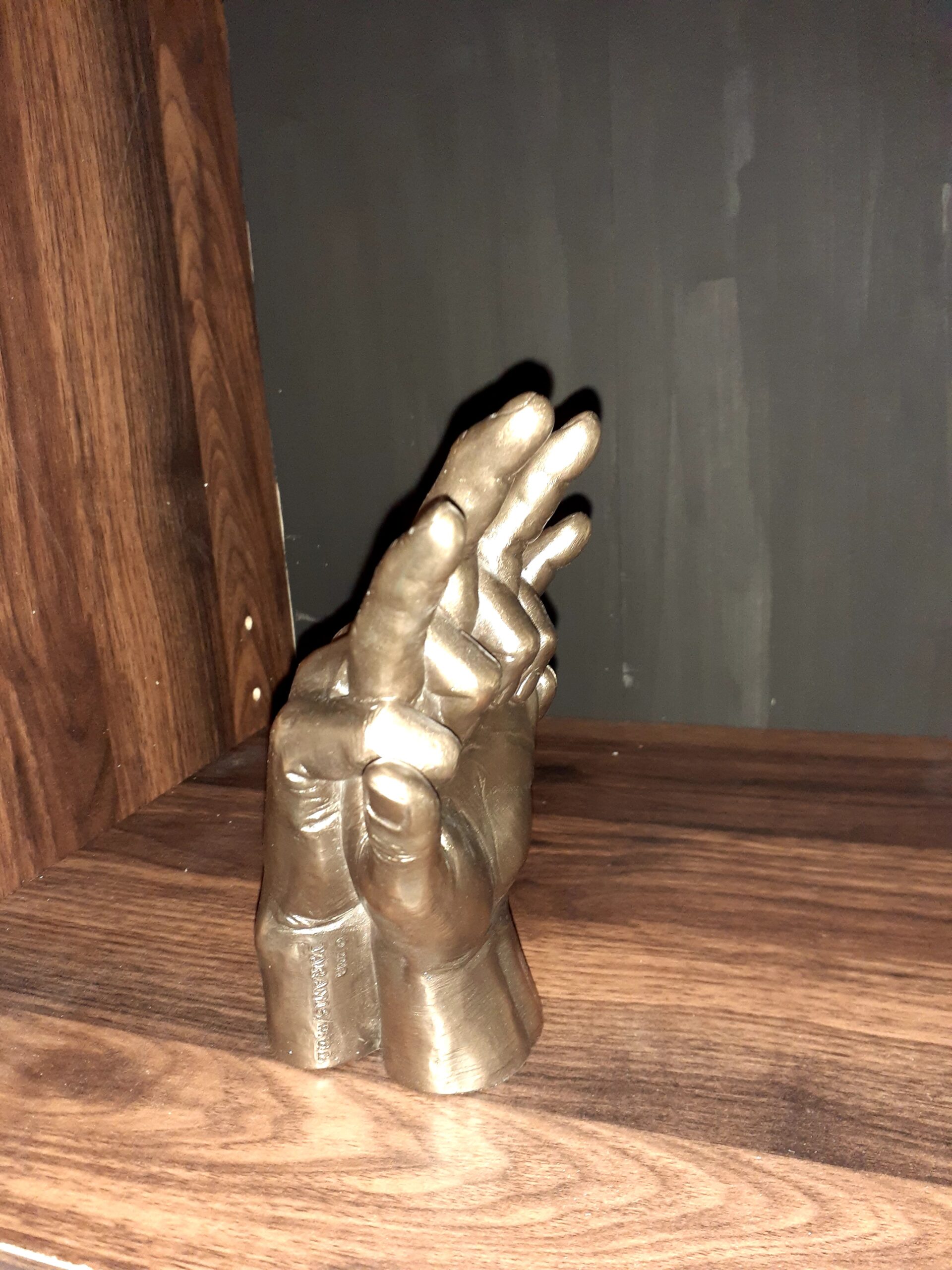Office Art
Each piece of art in our office has a story. We hope you enjoy the stories behind the art, and we invite you to share your thoughts and suggest other pieces of art.
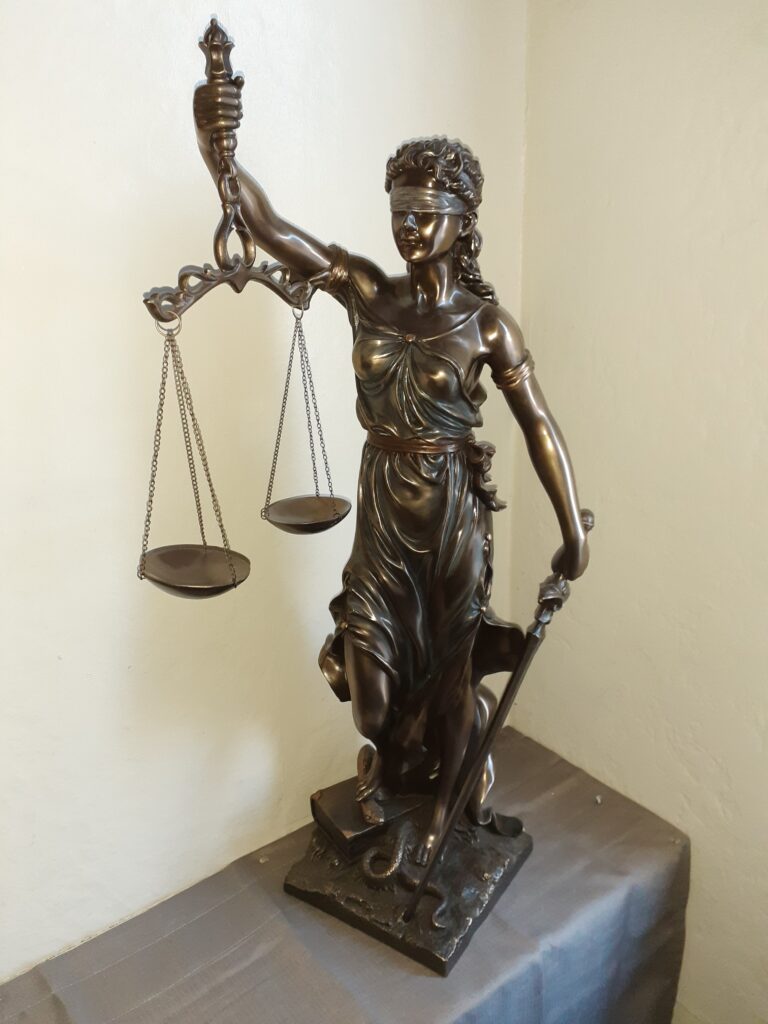
Lady Justice in Bronze
Lady Justice derives from the Egyptian goddess Ma’at who personified truth, balance, and order. Later, ancient Greeks worshipped the goddess Themis and her daughter Dike, who was usually depicted carrying a balance scale. The ancient Romans revered her as Justitia, who held a sword to represent authority and a balance scale to measure the strength of a case. Our modern depictions of Lady Justice resemble Justitia, with a blindfold being added in the 16th century to represent impartiality.
Elephant Family
This four piece set represents the joy of family and the tragedy of divorce. We prepare divorce paperwork for our clients, but no one wins when a family is broken and divided. The mother elephant leads the children away as the father looks on with sadness, trying to give one last wave to his children as they leave.
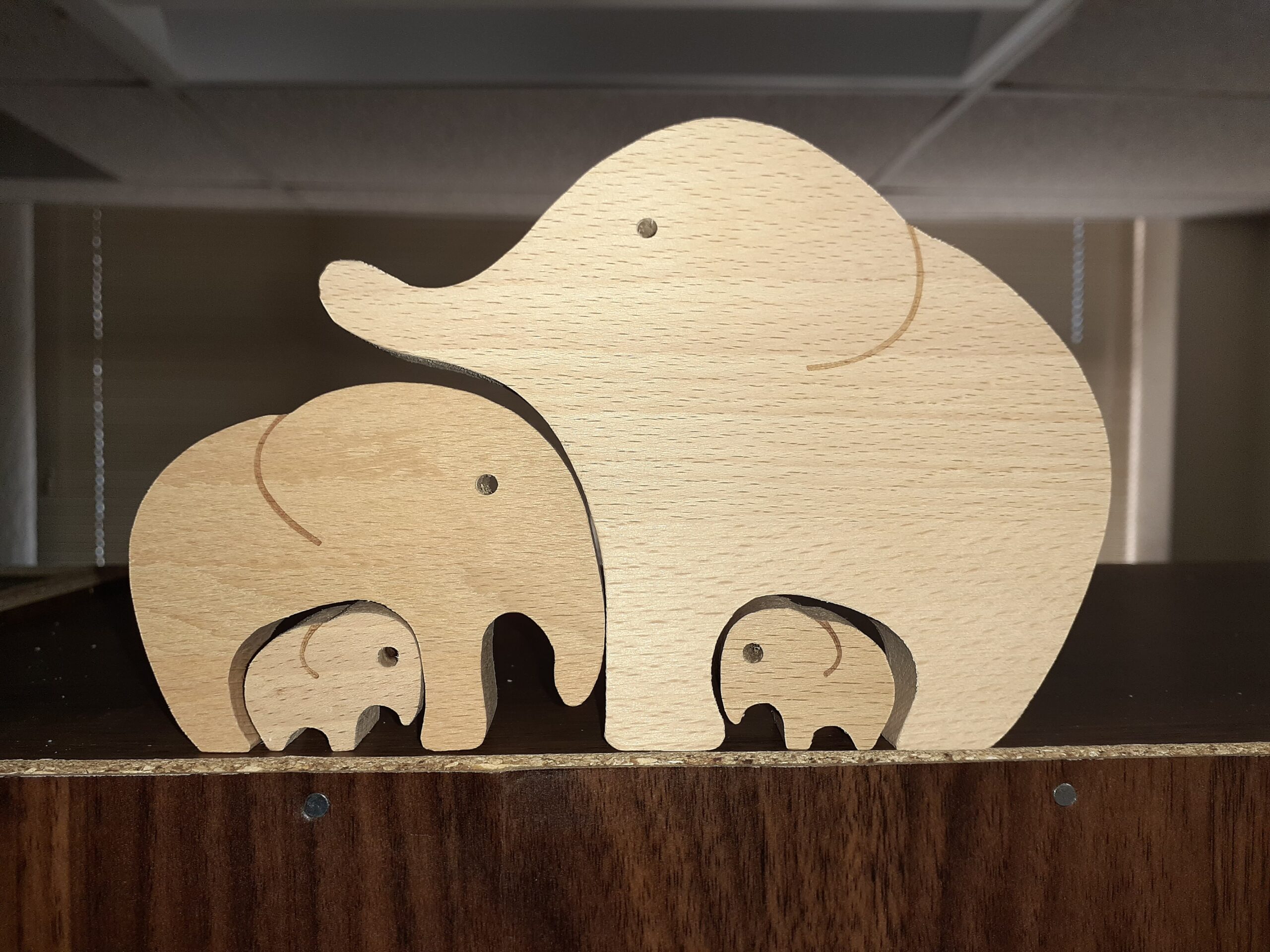


Elephant Mother
The tragedy of divorce and child custody proceedings often leave the children hanging with one of the parents struggling to save them.
Lamp
In 1996, a boy sat carving soapstone figures in his small open-air shop near the red sandstone fort by the Yamuna River in Agra, India. The figures sold for about twenty cents, and the boy could expect to sell six or seven on a good day. At dusk, he filled a lamp with ghee, rolled out his sleeping mat, and lit the lamp before settling down to pray and meditate in between visits from potential customers. When asked about the lamp, the boy explained that he lights the lamp, his Diya, each time the light of day and dark of night meet one another so that he can purify his home and heart. Liking the lamp and the story behind it more than the soapstone figures, a customer offered to purchase it for a few dollars, but the boy declined. The customer increased his offer several times, and the boy reluctantly agreed to part with the lamp for what amounted to about twenty-three dollars, which the boy immediately distributed among the vendors and beggars on the street, saving nothing for himself. The boy instructed the customer to never let the lamp burn dry but to always ensure that the lamp had enough ghee or a spirit could enter the lamp, but the customer was negligent, and the lamp burned dry the same night. In the morning, the customer filled the lamp with ghee and tried to light it again, but the lamp would not burn, so he returned and asked the boy how to fix it. Fearful, the boy said that the lamp should be buried and never touched lest the spirit inside it escape. He explained that the spirit may be a kind djinn, what we call a genie, or it could be an evil efreet.
The lamp has sat on a shelf for twenty-five years, never cleaned or dusted lest the rubbing of the lamp let the spirit out.
The lamp is like the court. If you take a matter to court, you release a powerful creature that may do you good or do you harm. You may have your wishes granted by a powerful judge, or the judge may rule against you with disastrous consequences. It is often best to leave the spirit in the lamp and not take chances. Negotiate a settlement if possible and avoid court if you are able.
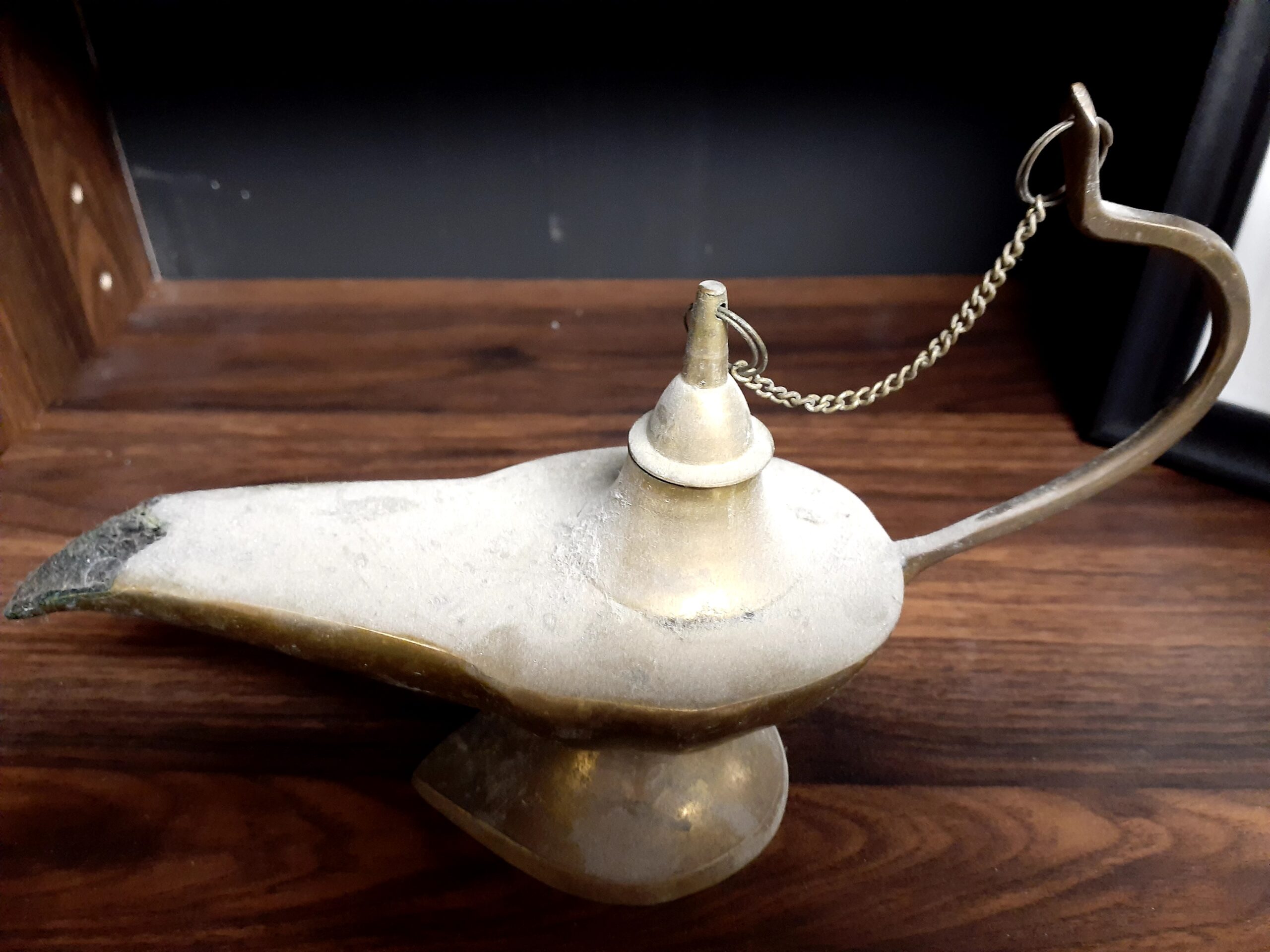
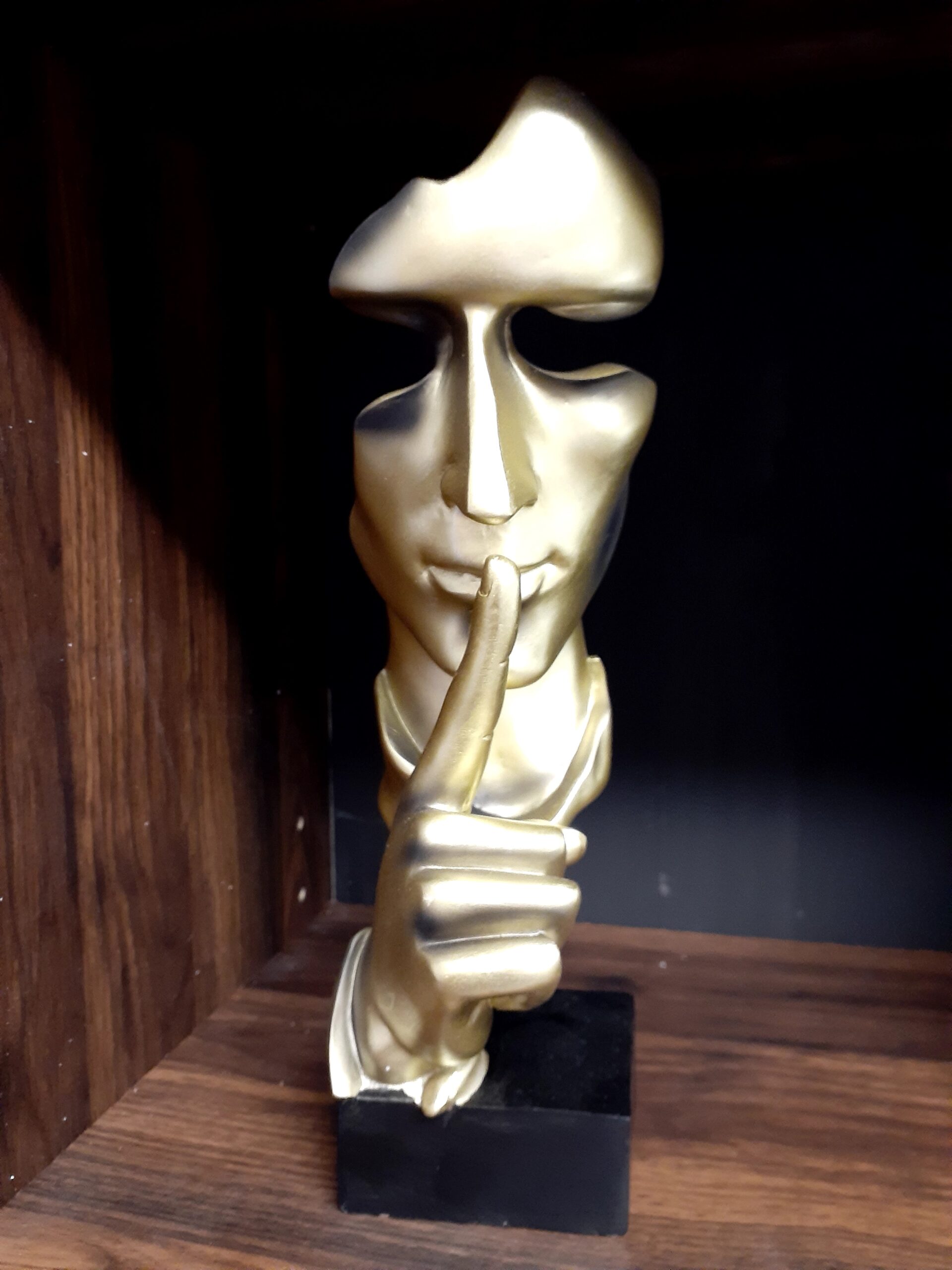
Silence
This piece reminds us that speech is silver, but silence is gold. All too often a client harms their own case with their words, e-mails, or text messages.
Holding Hands
This statue of holding hands can represent love or violence. If the hand is held with consent, it is love. If only one person consents, it may be violence. If it is violence, we can help you prepare a domestic violence restraining order.
